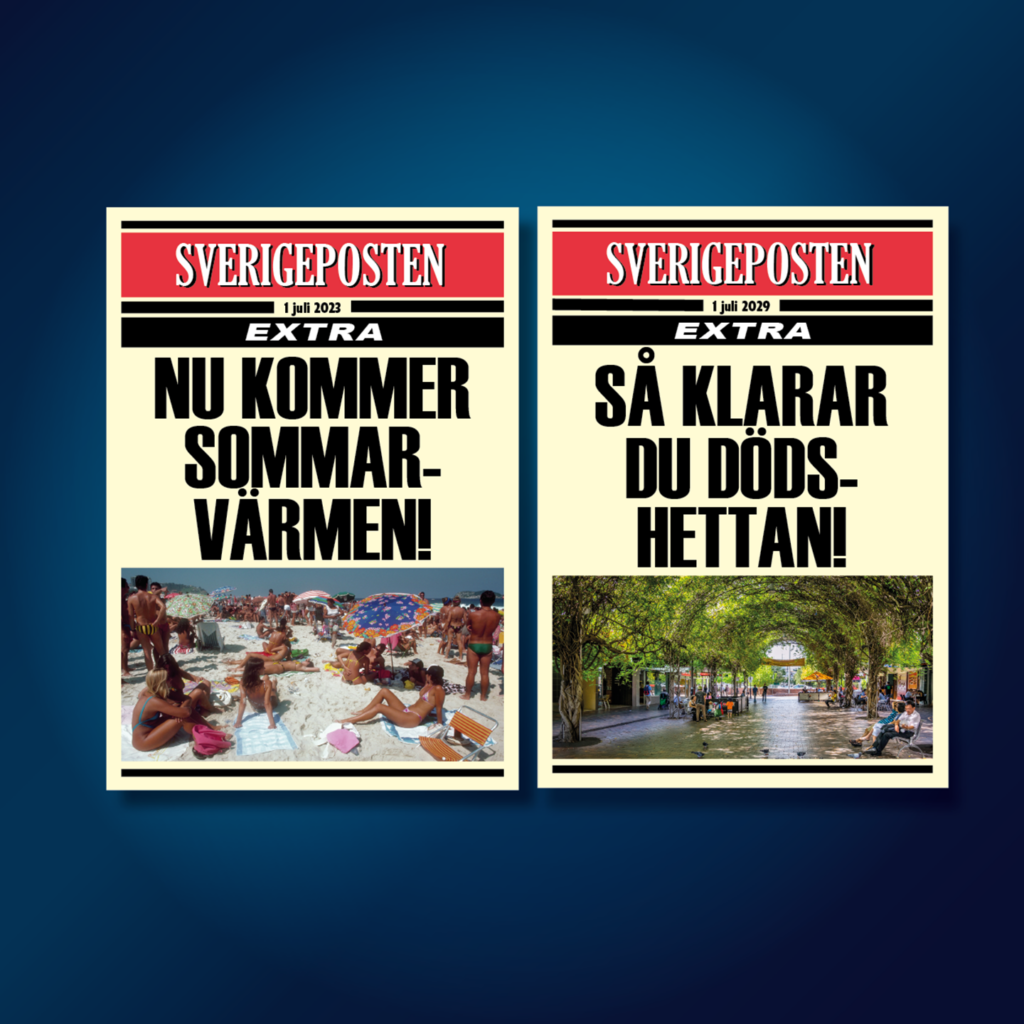During the fossil era, it was common for people to chase the sun by flying to warmer latitudes, applying sunscreen and then lying on the beach getting “toasted”.
In the 2000s, however, the effects of climate change became increasingly worse. The newspaper headlines that used to yell out “Summer heat is here” with pictures of sunbathers now advertised “Killer heat strikes nations”.
Fear of skin cancer and scientific reports on the negative impact of sunscreen on life in the oceans led to an increasing number of people turning to the oldest form of sunscreen – thin, white clothes.
The extreme temperatures made “cooling vacations” popular. Travel agencies saw a new market and started marketing bathing in forests or renting cabins by alpine lakes. This, in turn, gave a boost to vacationing by train.
The heat also had a great impact on people’s work, not least for those working outdoors with physically demanding tasks. In the summer of 2027, a construction worker in the city of Skövde suffered serious heatstroke, fainted and fell down two floors from a scaffold. This received a lot of attention and unions successfully ran the #TooHotToHammer campaign where they demanded siesta for workers in hot environments when the temperature was too high.
The cities were particularly hot. Concrete, asphalt and buildings contributed to creating heat islands, and vegetation in the cities no longer offered the same cooling effect as homeowners cut down trees to get a better view or space for a new terrace. This was one of many reasons why many inner cities were shut down for car traffic – the streets needed to be torn up and made green again.
So, where we now meet up for a cup of coffee actually used to house streets for cars just a few decades ago. Hard to believe today!
This text is part of the future scenario and study material Beyond the Fossil Era.
